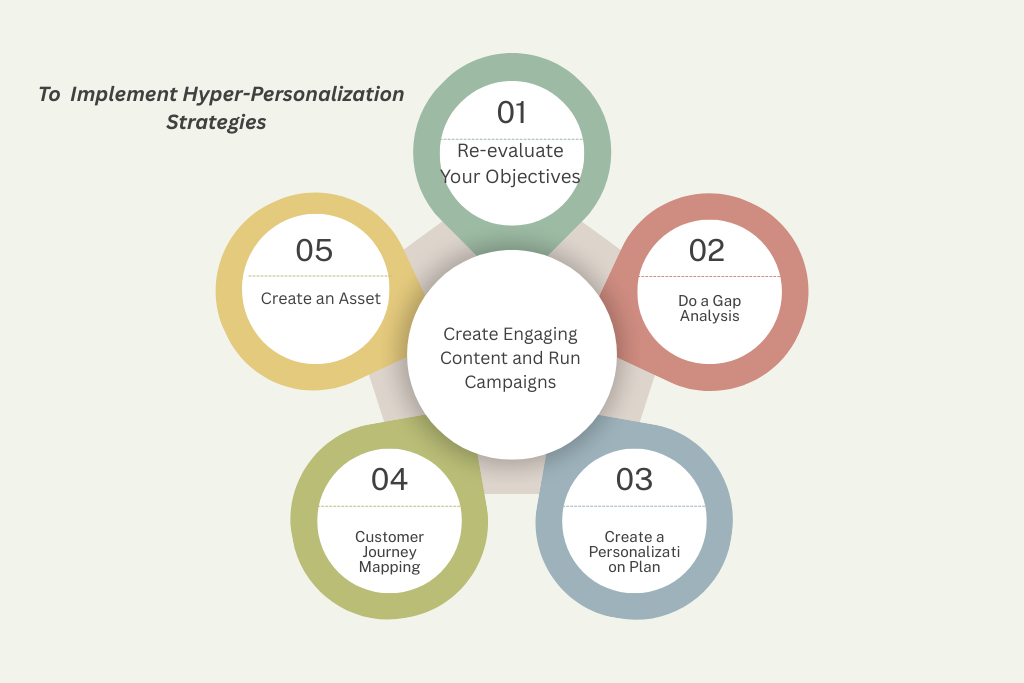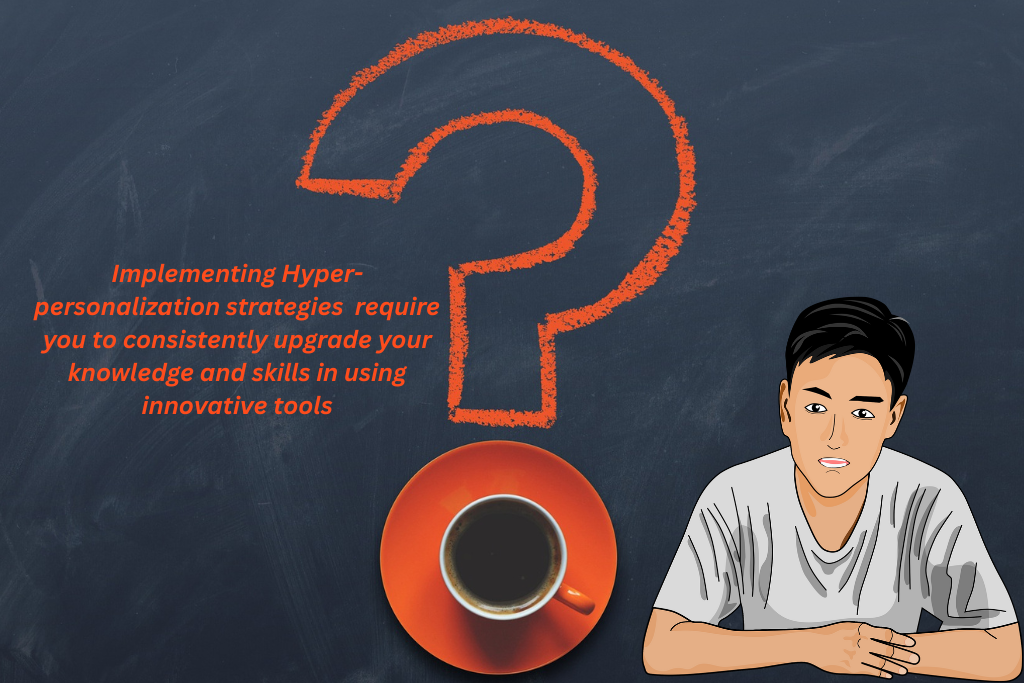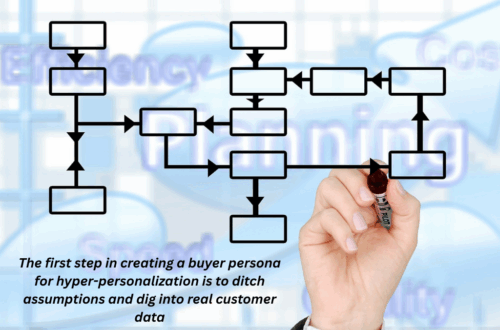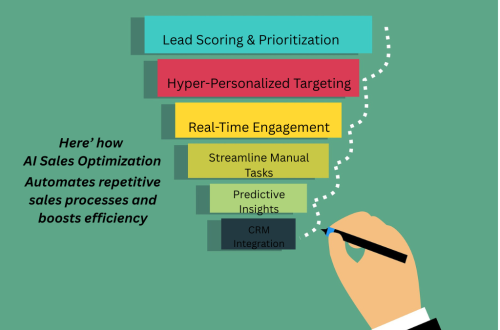
Implementing Hyper-Personalization Strategies for SMEs. How to Set a Practical Roadmap?
Website content is directly proportional to relevancy, and implementing hyper-personalization strategies is extremely important to deliver a tailor-made site experience. Hyper-personalization creates a relationship between businesses and consumers by offering them an individualized digital experience. To achieve personalization at scale, it is essential to differentiate customer experience at the individual level. For that, you need to invest in asset creation and avoid mediocrity.
According to a report in 2021, 78% of customers are more likely to repeat purchases from companies implementing personalization strategies.
Why SMEs Need Hyper-Personalization?
SMEs don’t have that huge fortune to spend on hiring teams for advertising and targeting purposes. They need hyper-personalization to recommend their customers’ products based on their preferences and behavior. AI tools help them get insights on customers’ real-time data, create a tailored shopping experience, and target individual preferences. These tools are smart, multitasking, faster, and more budget-friendly as compared to their alternative solutions.
SMEs, by implementing hyper-personalization strategies, offer more personalized recommendations, as well as more customized and contextually tailored relevant experiences within a limited budget. In short, SMEs need hyper-personalization to ‘
- Boost customer engagement by providing tailored recommendations to keep customers interested.
- Provide more relevant and encouraging interactions
- Drive higher conversions by offering customized offers and turning visitors into buyers.
- Improve customer loyalty by offering a consistently personalized experience to build trust and encourage repeat purchases.
- Maximize their marketing efficiency by making campaigns more targeted and focused
- To deliver a better user experience and create strong brand-user connections.

How SMEs Can Implement Hyper-Personalization (A Step-by-Step Guide)
Implementing hyper-personalization for SMEs is not about just using some highly efficient and affordable tools. The process involves the strategic application of the following steps.
Here’s a complete guide for you to implement hyper-personalization strategies in your business:
Re-evaluate Your Objectives
Instead of diving blindly into personalization initiatives, set up clear objectives of understanding and solving your consumers’ problems. The most important motive is to provide innovative and effective support to customers while fixing their problems. Create a checklist to see if your hyper-personalization strategy
- Is driving improvements in your business
- Boosting customer experience and ease
- Fast-paced your workload
- Is improving customer engagement and conversions
Link the answers to these questions to your business objectives. Analyze if implementing hyper-personalization to your business is improving your chances of sustained success.
Do a Gap Analysis
Implementing hyper-personalization requires you to address multiple key areas, including data processing, company culture, and skillset collateral. In other words, the process of enabling technology requires a complete audit of your business capability in these areas. Gap analysis will help you understand your business shortcomings and how implementing hyper-personalization will help you meet your objectives.
Create a Personalization Plan
After the Gap analysis, you can create a comprehensive plan for socialising your business. For an imperative outcome, you need a personalization plan that tightly binds your customer and business benefits together. These first three steps are tough but crucial to enhance the customer experience, value proposition, and personalization strategy. In these steps, you need to
- Uncover the huge advantages of volume and variety of customer data, including their behaviors, physical consumer journey, and the frictions that they face to achieve engagement and conversion
- Understand the customer journey and motivate them by generating deep insights into individual customers. Use these insights, your analytical and emotional thinking, to create a personalized plan
- Design your plan to grab the greatest opportunity of increasing engagement, creating a relationship with your consumers, and achieving your business goals
- Understand what emotionally triggers your consumers and what satisfies them
Customer Journey Mapping
After your qualitative research and analysis on customer behavior and insights, visualize how consumers will react to your hyper-personalization strategies from initial product discovery to product sale, and afterward. The qualitative research that you conducted will help you to anticipate consumer response throughout the journey. These research insights and your creativity will blend to create a compelling, engaging, and useful customer experience. This experience will boost their chance of becoming loyal customers.
Create Engaging Content and Run Campaigns
Getting armed with qualitative research, insights, Gap analysis, a personalization plan, and mapping a customer journey, you are now ready to create relevant content and a full customer experience. This is another challenging step where you have to creatively represent your brand personality that makes it look trustworthy and versatile.
Create an Asset
SMEs’ primary focus is to maximise their assets while minimising cost. You can create this asset through the website’s navigation. Call centre prompts, guest experiences, gaming, information articles, or sharing anything engaging of mutual interest to create interaction between the brand and the consumer.
Consistency in Implementing Hyper-personalization Activity
With all set, you are now ready to serve your consumer. However, you have to carefully manage each creative asset to ensure your customers receive a tailored experience across all touchpoints. There should be consistency in using AI tools, performing real-time analytics, and creating a compelling customer experience to ensure they won’t miss out on anything.
Test Your Strategies and Optimize for Growth
It’s crucial to test your hyper-personalization strategies and measure their impact from day one. Consistent and rapid testing provides you with important learning aspects of optimizing your strategies and setting up a framework to achieve maximum goals on a minimum budget.
Best Practices and Common Mistakes to Avoid
Along with implementing these strategies, you must understand what works and what doesn’t.
| Strategies That Work | Strategies To Avoid |
| Automation with AI tools | Over-automation with a lack of human supervision |
| Sending personalized messages | Misaligning messages that don’t resonate with consumers’ preferences |
| Consistently analyzing real-time insights | Overlooking data accuracy |
| Using customer data for good | Over-personalizing to the point of intrusion |
Conclusion
For SMEs, believing that implementing hyper-personalization strategies requires you to know inside and out complex AI tools, it’s nothing like that. The process is simple as we discussed, yet it does require consistently upgrading your knowledge and skills in using innovative tools to stand out in the market, gaining consumers’ trust, and boosting revenue.







One Comment
Pingback: